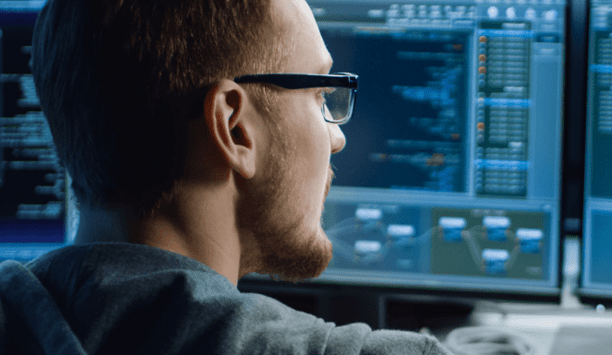How Do New Security Technologies Transform Retail And Loss Prevention?
Editor Introduction
When it comes to preventing theft and ensuring overall safety, technology offers a robust toolkit for retail stores to enhance security in several ways. From intelligent surveillance systems to RFID tags used to avoid shoplifting, today’s retail and loss prevention strategies are more effective than ever. Beyond security, the newer technologies can also provide benefits related to merchandising, inventory control, customer service, and the list goes on. The combination of abundant data and artificial intelligence (AI) is a powerful one-two punch that is on the verge of reshaping the retail industry. We asked this week's Expert Panel Roundtable: How are new technologies transforming the retail and loss prevention markets?
Retailers face a wide range of threats: geopolitical conflicts, local protests, organized retail crime, workplace violence incidents, and supply chain disruptions, to name a few. These threats have impacted companies, not only by posing risks to employees and customers but also by damaging brand reputation and business continuity. Retail security teams need a holistic view of threats to mitigate risk and minimize losses. Technology platforms help to collect and connect data around a multitude of possible threats security teams receive daily. These platforms are critical; the ability to illustrate trends and patterns in retail crime is even more helpful. Platforms should also be able to monitor a wide range of open-source intelligence (OSINT) sources and public event data, including social media and the dark web, as well as provide incident tracking, all within a single system of record. For loss prevention and retail security teams, using a technology platform to stay one step ahead of an incident is imperative to the safety of shoppers and retail workers alike.
In recent years, retailers everywhere have been evaluating and transforming their brick-and-mortar store strategies to prove the value of in-person channels. Until now, physical locations could not compete with unmatched global reach, lower overhead costs, and targeted personalization made possible by e-commerce. Today, however, advanced technologies, like video analytics, are empowering physical stores and multi-channel merchants to achieve the same effect. Integrating video analytics in brick-and-mortar stores enables retailers to bridge gaps between online and offline shopping experiences with real-time data – such as customer interactions with products and displays. This business intelligence enables retailers to make informed decisions, enhance operational efficiency, and deliver a seamless shopping experience that not only meets the evolving needs of consumers but also mirrors the data-driven online experience. Additionally, video analytics in physical stores critically supports asset protection and loss prevention: When retailers have more insight into consumer behavior and visitor patterns, they can proactively implement plans to protect people and property and reduce shrinkage.
When used effectively, advanced technology and analytics have the power to transform the retail industry. As we are seeing right now, innovative advancements in edge devices, body-worn cameras, audio, and access control, are empowering, and enabling retailers to help mitigate crime, enhance loss prevention programs, and improve business operations. Additionally, surveillance technology has evolved significantly, moving beyond mere video monitoring to advanced metadata collection. This invaluable data fuels advanced video analysis, enabling threat detection, motion recognition, and object classification, provides a better understanding of the behaviors of potential bad actors across the zones of influence, as well as automates processes, cuts costs, and maintains efficiency and productivity. In essence, the metadata collected from visual sensors (cameras) and the actionable insights gained from the analytics are not only transforming loss prevention operations in retail but also extending its impact far beyond business operations, thus revolutionizing the entire industry.
Retailers must continually adapt their loss prevention tactics by integrating emerging technologies and preparing for upcoming challenges. The transition to cloud-based security solutions represents a profound shift for the industry. With this technology in place, retailers can remotely monitor and analyze video footage in real-time and identify and respond more effectively to potential threats such as shoplifting or employee thefts. Cloud-based security solutions align well with this sector’s requirements, providing capabilities such as remote access, intelligent alerts, and deep analytics to enhance the monitoring of assets and minimize losses. The introduction of AI-powered devices also represents a significant leap forward. Using advanced analytics, these devices can identify unusual behavior, delivering prompt alerts and actionable intelligence. These analytics extend beyond security, offering insights into marketing effectiveness, such as tracking customer engagement with product displays. The versatility of these systems across various business functions adds immense value, illustrating the broad utility of modern technological solutions in the retail landscape.
In general, alarm central stations respond to burglaries long after a break-in occurs. It’s time to stop burglaries before they start. AI-enabled monitoring solutions are helping organizations adopt a more proactive security posture. Retailers are increasingly installing cameras that “activate” upon recognition of human or vehicular motion as well as loitering in an area for a suspicious amount of time. Coupled with automated security announcements and strobe lights, these solutions advise anyone in the area to move along. If the threat persists, the camera can link to a live monitoring operation where trained professionals can address the individual directly with live audio and video. In the same way, virtual guard services are enabling retailers to increase efficiency and lower costs while providing enhanced security. For example, a retailer that once needed 2-3 employees to open or close a store due to safety concerns can safely utilize a single employee with a virtual guard.
More than ever, retail operators want to have as much control over their premises as possible and as a result, mobile-friendly, cloud-enabled security solutions that put the power in the hands of the operator are on the rise. Gallagher’s Security Made Better (SMB) allows users to manage access permissions; add and remove cardholder access, open and close doors, and arm and disarm alarms all from their smartphone. With SMB, when an alarm occurs, users can opt to request a guard or view CCTV footage to determine if the alarm was false or not and whether any follow-up action is required. Artificial intelligence within CCTV is progressing at a rapid pace. AI cameras can be used to identify what product a shopper has placed on a self-serve kiosk ensuring shoppers aren’t selecting lower $/KG items to steal from supermarkets. That is a great loss-prevention tool for businesses.
Machine learning and AI are allowing retailers to be more specific in how they want algorithms trained to combat specific threats in particular markets. AI algorithms can be trained, for example, to help detect cart push out through emergency exits. Once these technolgies are deployed, retailers can react more quickly to threats and become more precise as algorithms become more refined. Retailers can look at camera systems as a blank canvas where with the right technology partners, they can use open platform technologies to modify their system to alert on specific or current threats without hardware upgrades.
Editor Summary
Many advanced security technologies integrate with existing investments, like video surveillance and POS systems, to deliver a comprehensive and holistic technology suite for retail asset protection. By embracing new solutions and leveraging existing technology investments in physical stores, retailers can unlock a wealth of opportunities to drive growth, improve customer satisfaction, and stay ahead in today's dynamic retail landscape. Technology is reshaping the future of retail and loss prevention markets by empowering retailers to adapt effectively to changing consumer preferences and market trends.
- Related links
- Biometric Access control systems & kits
- Biometric Access control software
- Infrared IP cameras
- Standalone Access control systems & kits
- Pan Tilt Surveillance cameras
- Card Swipe Access control systems & kits
- Control Software Video Surveillance software
- Networked Access control systems & kits
- Card Access control software
- Detection Software Video Surveillance software
- Contact Access control software
- PCB Surveillance cameras
- Network IP cameras
- Proximity Access control systems & kits
- PC-based Access control systems & kits
- PTZ IP cameras
- Smart Card Access control systems & kits
- Thermal Surveillance cameras
- Wireless Surveillance cameras
- IP Surveillance Software Video Surveillance software
- Contact Access control systems & kits
- Management Software Video Surveillance software
- Pinhole Surveillance cameras
- Smart Card Access control software
- Central Monitoring Option Access control software
- Infrared Access control systems & kits
- Recording Software Video Surveillance software
- Surveillance Software Video Surveillance software
- Door Monitoring Option Access control software
- DVR Interface Access control software
- Face Recognition Software Access control software
- Keypad Commands/Intrusion Zones Access control software
- Video Detector Video signal devices & accessories
- Video Launch Amplifier Video signal devices & accessories
- Remote software for telecode door entry phone system Access control software
- Video Line Correctors Video signal devices & accessories
- Video Line Enhancer Video signal devices & accessories
- Gallagher Access control software
- Gallagher Access control systems & kits
- Salient Systems Video Surveillance software
Expert commentary
Security beat
Security bytes
- Getting To Know Dan Grimm, VP And General Manager Of Computer Vision At RealNetworks
- Big Wins And The Importance Of Showing Up: Insights From SecurityInformed.com Editor Larry Anderson
- Setting Goals, Business Travels And Radioactivity: Success Secrets From Tiandy's John Van Den Elzen
- Getting To Know Jeff Burgess, President/CEO At BCDVideo
5 Surprising Findings From OT Vulnerability Assessments
DownloadMulti-Residential Access Management And Security
DownloadGuide For HAAS: New Choice Of SMB Security System
DownloadHikvision: Solar Powered Product Introduction + HCP
DownloadFacial Recognition
DownloadVerkada TD52 Cloud-Based Video Intercom
exacqVision IP08-64T-R1XW-E X-Series 1U Rdnt IP NVR 64TB RAID5 Windows OS with 8 IP Ent Lic
Climax Technology TouchPanel-3 7” Color Graphic Touchscreen Panel























